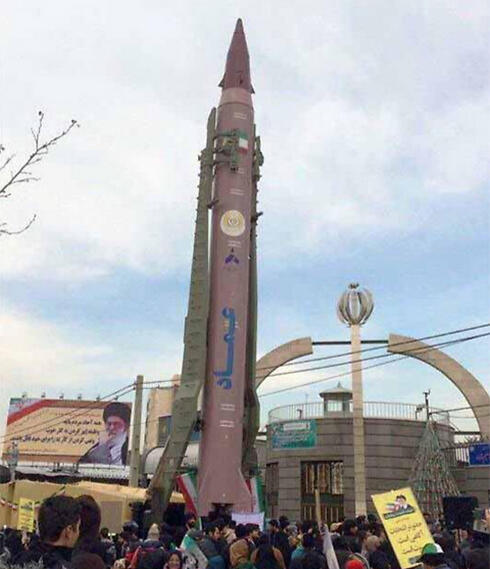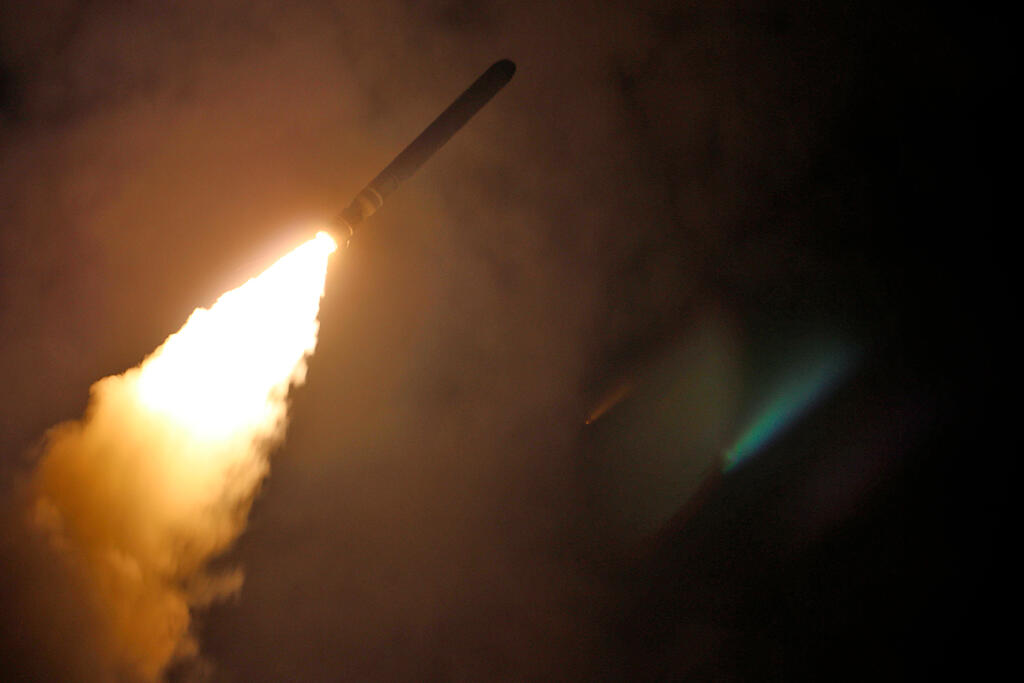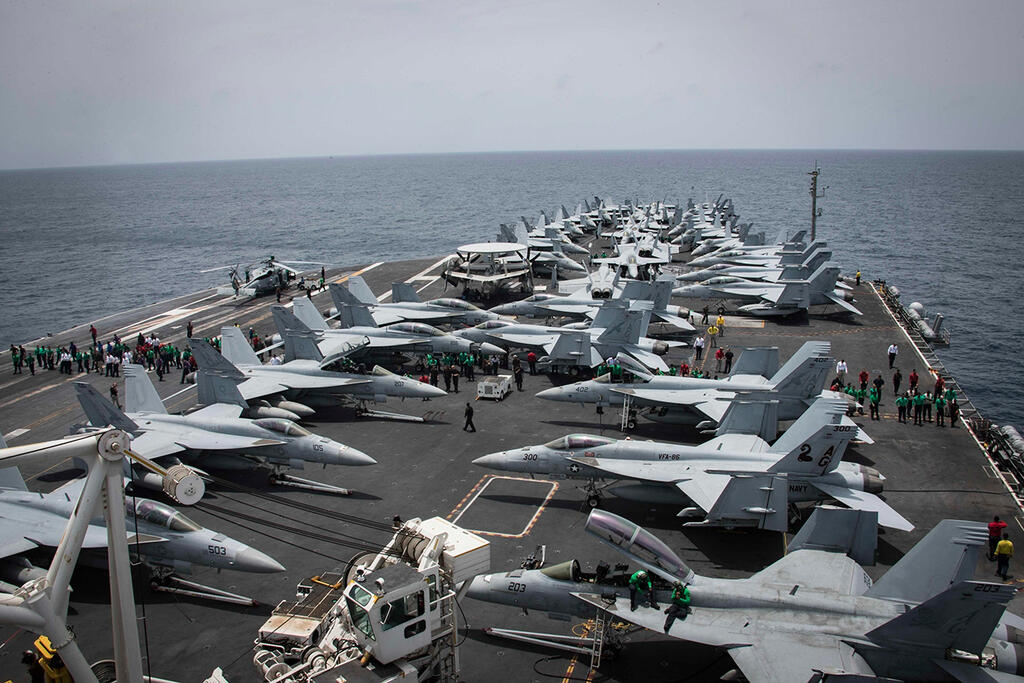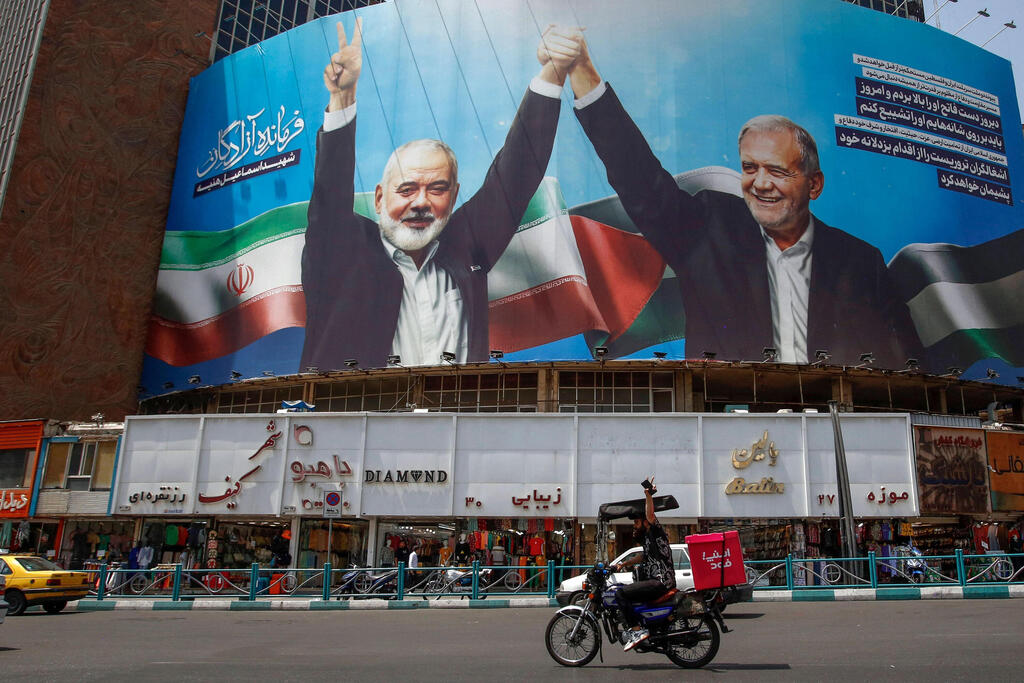Getting your Trinity Audio player ready...
Iran’s Revolutionary Guards and Hezbollah in Lebanon appear to have decided on a plan for a retaliatory attack against Israel but are delaying its execution for strategic and operational reasons. The delay is due in part to the close surveillance and readiness of the IDF to launch a counterattack against any aggression from Iran or Hezbollah.
Recent overflights by Israeli Air Force jets above Beirut aim not only to intimidate Lebanese residents but also to exploit Israel’s aerial superiority and maintain constant surveillance for any preparations for an attack on Israel. The skies over Lebanon and western Syria are densely populated with armed aircraft and drones, ready to strike within minutes if a missile launcher is detected.
5 View gallery
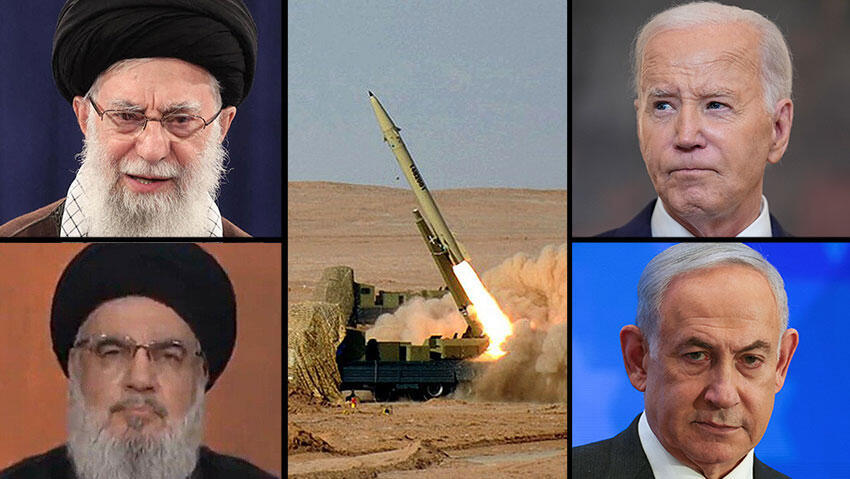

Top left clockwise: Iranian Supreme Leader Ali Khamenei, US President Joe Biden, Hezbollah Secretary-General Hassan Nasrallah and Prime Minister Benjamin Netanyahu
(Photo: REUTERS/Ronen Zvulun, Alex Kent / GETTY IMAGES, Rabih DAHER / AFP, Reuters)
While drones and Grad rockets are relatively easy to conceal, heavier missiles that require preparation for launch, particularly those powered by liquid fuel, are more easily detected by Israel’s advanced monitoring systems. If Israel detects a missile being prepared for launch, it can promptly engage it, day or night, using advanced sensors provided by both Israel and the United States.
In Lebanon, maintaining armed surveillance and quickly closing the loop to thwart a retaliatory strike is relatively straightforward, relying on available aircraft and basic intelligence on potential target locations Hezbollah might use for attacks. In Iran, however, maintaining continuous surveillance and responding within minutes of detecting attack preparations is more challenging.
Israeli and American satellites can capture detailed images of suspected sites in Iran, particularly long-range ballistic missiles.
Prior information not required
Iran’s missiles, such as the Shahab-3 family, require about an hour to prepare for launch, including fueling, making them detectable by satellite surveillance.
The real challenge is maintaining tight surveillance and readiness to intercept an attack, which requires significant resources, aircraft and a robust air defense system on standby in Israel and on U.S. Navy ships. Iran and Hezbollah understand two key points: Israel and the U.S. will not preemptively strike to prevent retaliation due to Washington's efforts to avoid igniting a regional war, but they will likely act to minimize losses and damage from any retaliatory attack through a counterstrike by "the blue side" (Israel and the U.S.), possibly even during the attack itself.
While it is unlikely that the U.S. would strike within Iran itself due to global strategic considerations, it may target Shiite militia bases in Iraq, Yemen and Syria if preparations to attack U.S. vessels or troops in the Middle East are detected.
Last week, Shiite militias in Iraq attacked the American base at Ain al-Assad in Iraq, and in Syria, they targeted a U.S. base in northeastern Syria, injuring several American soldiers. In retaliation, the U.S. struck these militias.
For Israel alone, maintaining tight surveillance and immediate readiness to thwart an attack presents a significant challenge. However, Israel possesses the means to execute such an operation, though it remains an "option of last resort" should Iran approach developing nuclear weapons.
Iran and Hezbollah better think twice
Hezbollah and Iran's strategic delays in executing a retaliatory attack against Israel are influenced by an unprecedented buildup of U.S. military forces in the Gulf of Oman, the Red Sea and the eastern Mediterranean over the past decade. This military presence includes not only advanced defensive capabilities against ballistic missiles and drones but also offensive capabilities that have been absent from the region, even after the U.S. bolstered its forces following October 7.
A notable example is the nuclear-powered submarine the U.S. has deployed to the eastern Mediterranean. Previously armed with nuclear ballistic missiles to deter the Soviet Union, it now carries nearly 160 advanced Tomahawk cruise missiles, which could inflict significant military and economic damage on Iran and precisely target numerous Shiite militia sites in Iraq and Syria.
Alongside the submarine, the U.S. has two missile destroyers in the eastern Mediterranean equipped with systems to intercept ballistic missiles, drones and other threats Hezbollah might launch en masse toward Israel. These destroyers significantly enhance Israel's missile and rocket interception capabilities.
While the U.S. is unlikely to launch an offensive in Lebanon, American officials have indicated they will support Israel in defending against a massive missile and drone attack from Hezbollah. Additionally, a maritime landing force, comprising three ships acting as mini aircraft and helicopter carriers, is stationed in the Mediterranean. This force, currently in Cyprus, includes several thousand Marines.
The primary mission of this naval force is not to invade Lebanon but to evacuate American citizens from the region should a full-scale conflict between Israel and Lebanon erupt. In the Persian Gulf and Gulf of Oman, a naval task force centered around the aircraft carrier USS Theodore Roosevelt includes a heavy warship, a cruiser, and two destroyers, all equipped with interception and attack missiles. The Red Sea also hosts two destroyers mainly outfitted with interception missiles.
Furthermore, four additional squadrons are stationed at Middle Eastern bases, ready to operate in any direction. While this force is often seen in the context of a potential retaliatory strike against Israel, its primary purpose is to protect U.S. military and naval personnel in the region and deter Iran and its proxies from targeting American troops.
The U.S. aims to make Iran and Hezbollah think twice before acting and jeopardizing hostage negotiations and cease-fire efforts that American officials are working to achieve. The military buildup also serves to protect U.S. military and strategic interests in the region and sends a message of global strength to China and Russia, demonstrating America's ability to rapidly concentrate significant force in a combat zone to defend allies and regional interests.
This message is particularly directed at China amid tensions with the Philippines and Taiwan. As part of this strategy, the U.S. has taken the risk of transferring the USS Abraham Lincoln from Asia to the Middle East.
Another strategic consideration is avoiding disruption of the cease-fire and hostage release deal. Hezbollah and Iran understand that Hamas leader Yahya Sinwar needs a cease-fire and want to support him. Such a deal would also allow them to step back from their initial decision to back Hamas's war in Gaza.
Everyone wants calm
Despite the belligerent rhetoric from Iran and Lebanon, the war has dragged on longer than expected, placing them in difficult dilemmas. Hezbollah Secretary-General Hassan Nasrallah is under heavy pressure from the Lebanese public.
In Iran, meanwhile, the new president, Masoud Pezeshkian, who seeks calm for the sake of the economy, is at loggerheads with the Revolutionary Guards, who demand revenge for the assassination of Ismail Haniyeh in Tehran.
Both Nasrallah and Iran's Supreme Leader Ali Khamenei would prefer to end the conflict with Israel, which has already achieved its objectives in northern Israel and could only entangle them in a regional war, including with the U.S. However, they cannot abandon their promise of a retaliatory strike after committing to it publicly. They may adapt their actions to the new tactical and strategic circumstances, including the upcoming talks on the cease-fire and hostage release.
The Biden administration is interested in a cease-fire and prefers to avoid American casualties, especially ahead of the elections in November. However, the U.S. will not hesitate to use its amassed power in the region if Iran and Hezbollah attempt to harm its vital interests.



